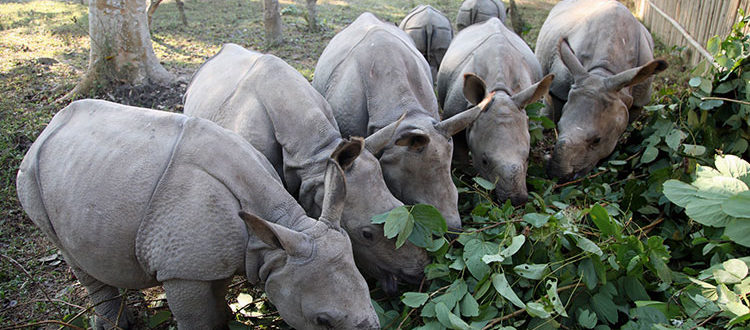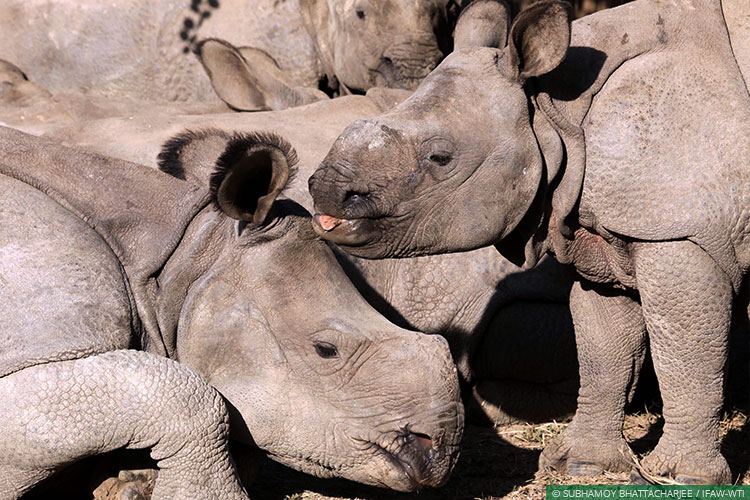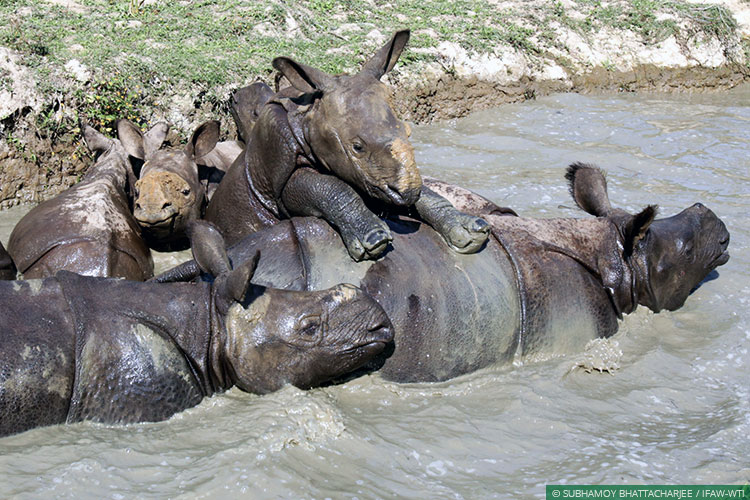Of Mud Baths and Winter Snuggles
An update on the eight rhino calves being hand-raised at CWRC
It’s been over six months since Kaziranga National Park was swamped by the worst floods to have hit Assam in over a decade. Among the 100-plus wild animal emergencies that our Mobile Veterinary Service units attended, were eight orphaned rhino calves that were brought to the Centre for Wildlife Rehabilitation and Conservation (CWRC) to be hand-raised.
The simultaneous long-term care of eight rhinos – a first in CWRC’s history – has been a massive challenge for our team on the ground. For the first month-and-a-half the calves were housed in the centre’s Large Animal Nursery; they were provided the requisite treatment for injuries or ailments suffered due to their exposure to the flood waters. Meanwhile, three large outdoor paddocks and a smaller paddock were being prepared. Once the calves had been stabilised they were first introduced to the smaller paddock attached to the nursery, and then, gradually, once properly acclimatised, allowed to explore the larger paddocks. These specially created paddocks have a natural stream running through them, which allows the calves to wallow and play – an important part of their natural developmental behaviour.
Another crucial natural behaviour that they had to learn was potty training. In the wild, rhinos use one designated spot to defecate – their toilet for life! Baby rhinos usually defecate on their mother’s toilet, but since there was no mother figure around, the babies at CWRC were initially ‘going’ in the water bodies. This, of course, increases the risk of water-borne disease and had the vets worried for a while. After about four months, though, the calves’ natural instincts kicked in; all eight now have their separate dung heaps.
The simultaneous long-term care of eight rhinos – a first in CWRC’s history – has been a massive challenge for our team on the ground.
There’s adequate forage in the paddocks in the warmer months, but since the ground is barren in winter our animal keepers are being kept busy collecting leaves and grass from the nearby forest. A lot of hungry mouths to feed! A few weeks ago we began to water the paddocks regularly, replenishing the water bodies and coaxing the dead grass back to life.
The rhinos are happily running and playing now, but they’re growing fast and we know the paddocks will have to be expanded soon.
“All the calves are doing well”, says Dr Panjit Basumatary, the lead veterinarian at CWRC. “It’s very touching to see how the younger calves stick close to the older ones at night nowadays, to keep warm. It’s a sign of affection, a behaviour they would normally display towards their mothers in the wild. The calves all wallow in the mud and play together, which is also a very good sign.”
Our team has proven itself equal to the task thus far. There’s a lot more that needs to be done of course and rehabilitating rhinos is intrinsically a long-haul process. So far so good though, and we hope that we’ll eventually be able to send all the eight rhinos #BackToTheWild.











